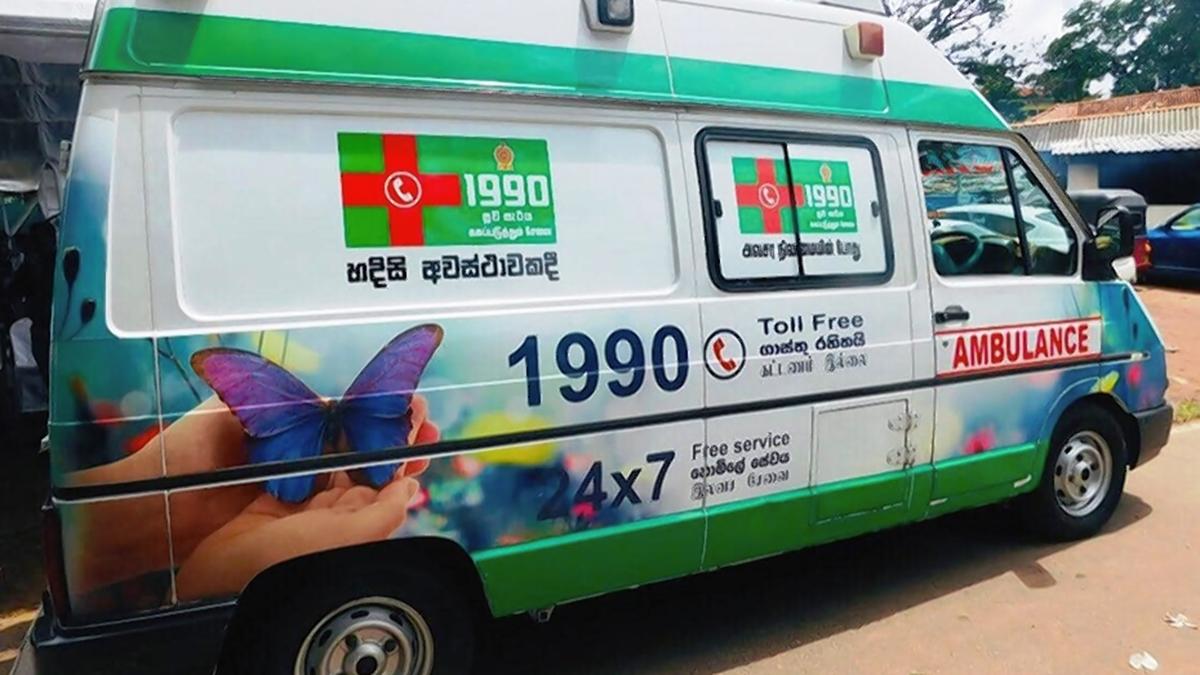
India-gifted ambulance service in Sri Lanka in need of critical support
The Hindu
An India-gifted free ambulance service in Sri Lanka, providing vital pre-hospital emergency care across the island for eight years, appears to be in need of critical support, going by a recent social media post by a public health professional.
An India-gifted free ambulance service in Sri Lanka, providing vital pre-hospital emergency care across the island for eight years, appears to be in need of critical support, going by a recent social media post by a public health professional.
Yasuni Manikkage, a doctor working at a Colombo-based government hospital, on Tuesday took to ‘X’ to flag a 51-year-old man’s sudden death at his residence in Colombo. “Desperately called Suwaseriya, but they did not have any available ambulances nearby. We could not save him on time. Why is funding Suwaseriya 1990 & saving lives not a priority for Lankan government?” she asked in the post that has since drawn much attention.
The delay in response time — the nearest ambulance was 30 minutes away — is uncharacteristic of the ‘Suwaseriya 1990’ service. From the time it was launched in July 2016, with a $7.56-million Indian grant, and expanded in two years with an additional $15.09 million from India, it has made a mark with its promptness and efficiency. Arguably New Delhi’s most popular project in Sri Lanka, the ambulance network has attended to about 82 lakh calls and 19 lakh medical emergencies till date, including in remote areas.
After the initial Indian grant assistance to set up the service Sri Lanka took over and has since been running it with a team of professionals working in coordination with the Ministry of Health. Over 700 of the medical technicians were trained in India initially, but following the pandemic years Sri Lanka developed its own training programme at the University of Kelaniya.
Despite the service’s reach and wide acclaim — a World Bank report called it one of the world’s most digitally advanced and free ambulance services — sustaining it is proving a challenge after Sri Lanka’s crushing financial meltdown in 2022, according to Dumindra Ratnayaka, Chairman of the Suwaseriya Foundation.
The island nation’s unprecedented economic crisis brought with it hyperinflation and a drastic rise in living costs, pushing many Sri Lankans, including thousands of medical professionals and technicians, to seek opportunities abroad. Consequently, Sri Lanka’s public health system, and the ambulance service that is part of it, are impacted. “Of our nearly 1,500 staff, we have lost 400 since 2022,” Mr. Ratnayaka said, speaking of the difficulty in finding technicians and putting them through training before they can come on board. Staff salaries are currently in the range of LKR 50,000 (roughly ₹ 13,800), with which an individual, let alone a family, can hardly make ends meet in Sri Lanka.
The government cannot increase salaries for just one section of public service, and it cannot afford salary hikes across the board at the moment, Sri Lanka’s Health Minister Ramesh Pathirana said. “We have made the necessary budgetary allocation for the ambulance service. The country is stabilising, and things are improving in the health sector too,” he told The Hindu on Wednesday.











